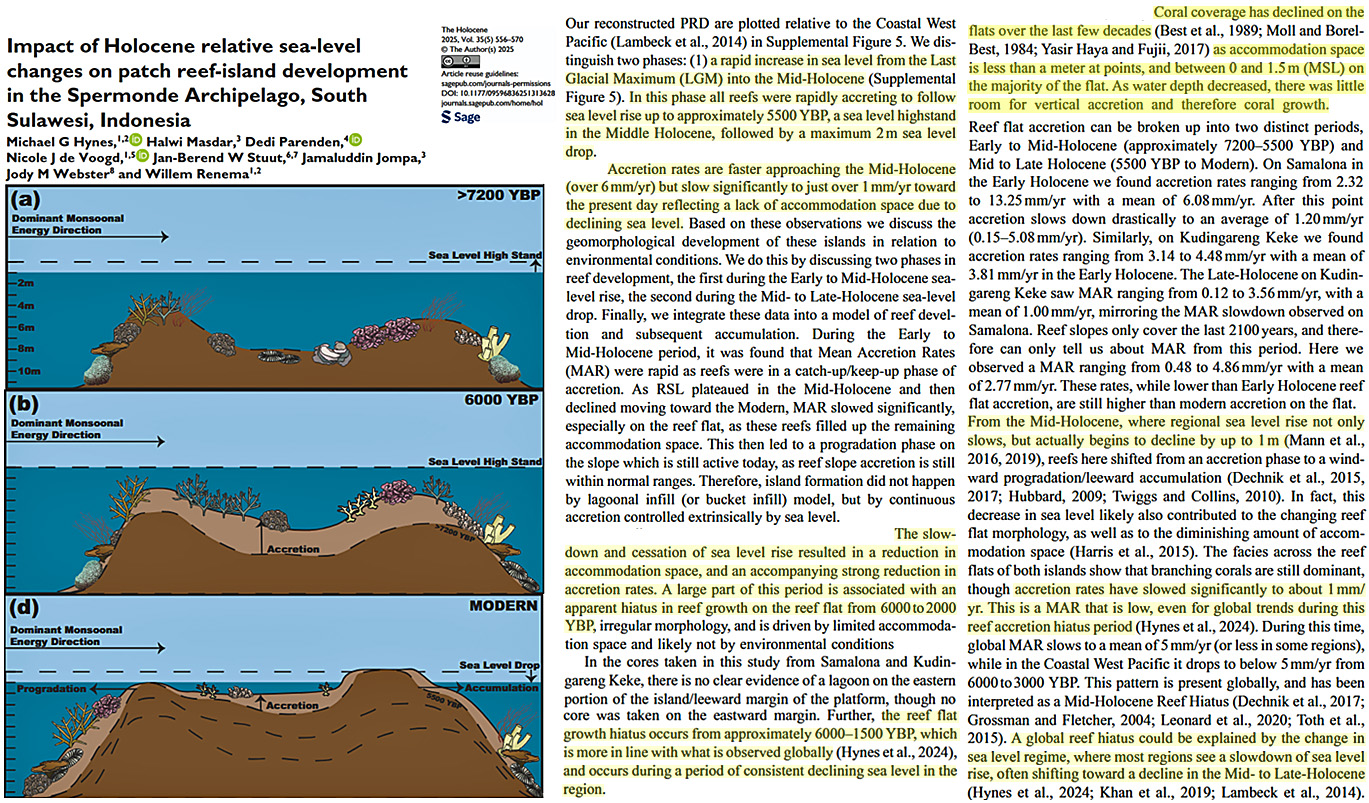New research from Indonesia indicates that from about 10,000 to 6000 years ago, when the ocean was warmer than today, coral reef growth was rapid, averaging ~6 mm per year.
Sea levels rose rapidly from the Early to Mid Holocene in this region, as they were up to 2 m higher than today 6000 years ago. The higher sea levels meant there was more room for coral reef growth.
As the ocean cooled and sea levels fell ~2 meters from the Mid-Holocene highstand, coral growth slowed to ~2-3 mm per year.
Today corals are only growing at rates of ~1 mm per year, as the water depths are too low to accommodate reef expansion. In fact, coral coverage “has declined on the flats over the last few decades,” as the “accommodation space is less than a meter at points.”

Image Source: Hynes et al., 2025
Research from the Great Barrier Reef region (e.g., Leonard et al., 2020) also indicates coral growth experienced “turn-off” periods during cold centuries (such as the Little Ice Age) with falling sea levels. When the ocean was “~1-2°C warmer than present” and sea levels were “~1.0 m higher than present,” this “allowed reefs to accrete uninhibited.”

